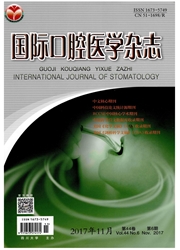

 中文摘要:
中文摘要:
Toll样受体(TLR)9与特异性配体结合后,不仅在包括头颈鳞状细胞癌(HNSCC)在内的多种恶性肿瘤的发生发展中高表达,而且具有促进肿瘤细胞增殖、侵袭及转移的作用;但TLR9在一些肿瘤中高表达预示较高的术后复发率及较低的术后生存率,在另一些肿瘤中高表达却是肿瘤预后较好的分子指标。TLR9参与HNSCC的相关分子机制,在于促进细胞增殖、抑制程序性细胞死亡、调节血管新生、促进肿瘤侵袭和促进免疫逃逸。目前,基于TLR9的抗肿瘤治疗已被广泛用于临床,其最终的临床效果尚待进一步了解TLR9的表达调控,分析TLR9参与HNSCC的双刃剑作用机制及相关信号转导环节,开发特异性高、不良反应小和可有效用于临床的TLR9佐剂或抑制剂。
 英文摘要:
英文摘要:
Chronic inflammation has close relation with the occurrence and development of malignant neoplasms, including head and neck squamous cell carcinoma(HNSCC). Toll-like receptor(TLR) may play an important role in this process. Toll-like receptor is a kind of the pattern recognition receptors which mediates the innate immune response by recognizing the pathogen-associated molecular pattern. High expression of TLR9 is found in some malignant neoplasms, including HNSCC, and has the ability to promote the proliferation, invasion and metastasis of tumor cells. As one of the key factors in the control network of the inflammation-related carcinogenesis, the potential molecular mechanism of TLR9 as well as the TLR9 based anti-tumor target therapy has been the hotspot in tumor research.
 同期刊论文项目
同期刊论文项目
 同项目期刊论文
同项目期刊论文
 Toll-like receptor-9 agonists increase cyclin D1 expression partly through activation of activator p
Toll-like receptor-9 agonists increase cyclin D1 expression partly through activation of activator p 期刊信息
期刊信息
